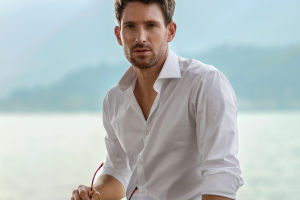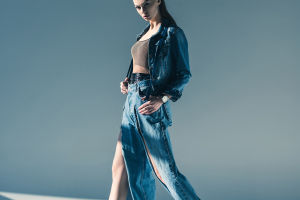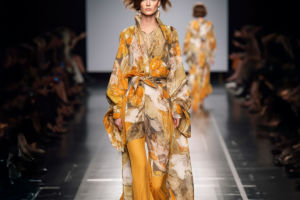When it comes to fashion, few regions are as globally influential as Japan and South Korea. Both countries have earned a loyal following for their distinct and trend-setting styles.
But if you take a closer look, you'll notice that Japanese and Korean fashion, while equally stylish, reflect different philosophies, aesthetics, and cultural roots. So, what sets these two apart?
Whether you're a fashion lover or just exploring new looks, understanding the key differences between Japanese and Korean fashion can help you define your personal style. Let's dive into the details and see how these two powerhouses differ in their approach to dressing.
Overall Aesthetic and Mood
Japanese fashion is known for its eclectic, experimental, and sometimes even avant-garde edge. It often embraces asymmetry, layering, and unconventional shapes. Styles range from minimalism (like in Tokyo's Muji-inspired looks) to subcultural maximalism (like Harajuku's colorful streetwear).
In contrast, Korean fashion leans towards polished, clean, and trend-conscious styles. The overall look is sleek, elegant, and more structured. Korean fashion aims for a "refined chic" appearance, often influenced by K-pop idols and TV drama characters. It's trendy, accessible, and carefully styled to highlight natural beauty.
Color Palette and Patterns
Japanese fashion tends to play with muted, earthy tones like beige, gray, deep navy, and khaki, especially in minimalist or urban styles. In subcultural circles, however, bold colors and mixed patterns are embraced — think oversized prints, clashing textures, and visual drama.
Korean fashion, on the other hand, prefers a lighter and more pastel-oriented color palette. Soft pinks, whites, light blues, and creams are common, especially in women's fashion. Patterns are usually minimal, favoring small florals or subtle checks rather than bold prints. This contributes to a softer, more romantic overall appearance.
Silhouettes and Fit
Loose-fitting silhouettes dominate Japanese fashion. Comfort, freedom of movement, and layering are prioritized. Oversized shirts, wide-leg trousers, drop-shoulder jackets, and flowy skirts are commonly seen in everyday wear. The fit is relaxed and androgynous, often blurring gender lines.
In Korean fashion, fit is much more tailored. Clothing often highlights the waistline or leg shape, with slim-fit trousers, crop tops, or body-conscious dresses being very popular. Korean fashion tends to emphasize figure-flattering cuts, giving a more put-together and feminine (or masculine) vibe, depending on the context.
Styling and Accessories
Japanese style encourages creative freedom in accessorizing. Hats, layered scarves, statement bags, and unique shoes are often part of the ensemble. In some subcultures, accessories are used to tell a story or make a bold statement. Individuality is celebrated.
Korean fashion, however, adopts a more coordinated approach. Accessories like dainty jewelry, structured handbags, and subtle hair clips are chosen to complement the outfit without overshadowing it. The goal is harmony and refinement — making the overall look feel cohesive and well-planned.
Makeup and Hair
While this article focuses on clothing, makeup and hair are also essential in defining each region's fashion identity.
In Korean style, beauty plays a major role. Smooth, glowing skin, soft pink blush, gradient lips, and neat brows are signature features. Hairstyles are usually sleek and tidy, often worn with soft waves or neat ponytails. These beauty standards are often tied to idol culture and idealized public images.
In contrast, Japanese fashion accommodates a wider range of beauty looks. Minimal makeup is common in some minimalist styles, while bold, artistic makeup is embraced in more experimental circles. Hair can be messy, asymmetrical, dyed in unusual colors, or styled to reflect personality rather than a fixed ideal.
Cultural and Social Influences
Japanese fashion is deeply rooted in individuality and expression. In Japan, standing out through fashion is more accepted, particularly in urban centers like Tokyo. Fashion is seen as an art form — a way to express your inner world.
In Korea, social appearance and conformity often play a larger role. Fashion tends to follow current trends closely, and looking neat and stylish is a sign of respect and self-care. There's more emphasis on group aesthetics, influenced by celebrities, K-pop, and beauty standards.
Popular Fashion Hubs
Japan's fashion epicenter is undeniably Tokyo — especially neighborhoods like Harajuku, Shibuya, and Omotesandō. These areas showcase a wide variety of personal styles, from vintage to techwear to ultra-feminine.
Seoul is Korea's fashion capital, and places like Gangnam, Hongdae, and Myeongdong offer a glimpse into the latest trends. The influence of Korean fashion globally can be traced back to these districts, where style is fast-moving and trend-conscious.
Which Style Suits You?
If you love comfort, creative layering, and personal expression, Japanese fashion might feel like home to you. If you prefer polished, coordinated, and modern looks, Korean fashion might be more your style. In truth, many people combine elements of both — mixing the softness of Korean style with the artistic depth of Japanese fashion.
Final Thoughts: Two Worlds of Style
Both Japanese and Korean fashion offer incredible inspiration, but they tell different stories. Japan celebrates individuality and artistic experimentation, while Korea champions modern beauty and trend-focused elegance. Neither is better — they simply cater to different moods, preferences, and cultural ideals.
Which one speaks to your personal taste? Or do you find yourself mixing both? Share your thoughts or outfit inspirations — and remember, true style always starts with being true to yourself.


